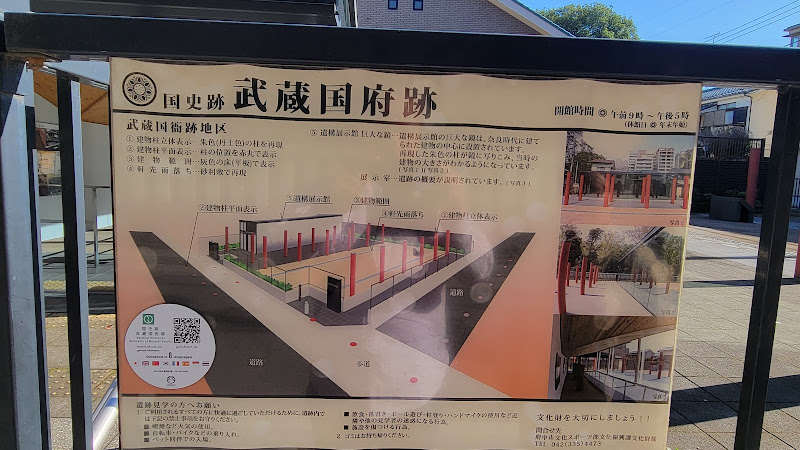
Remains of Provincial Office of Musashi
About Remains of Provincial Office of Musashi
Description
Walking through the Remains of Provincial Office of Musashi feels like stepping into a time capsule of ancient Japanese administrative history. As one of the few surviving provincial government office sites from the Nara and Heian periods, these archaeological remains tell fascinating stories of how local governance operated over 1,200 years ago. Y'know what's really cool about this place? It's not your typical tourist trap - it's an authentic slice of history that most visitors to Japan completely miss out on. The site features foundation stones and structural remains that once formed part of the regional government headquarters. While it might not look like much at first glance, these humble remains were once part of an impressive complex where important administrative decisions were made for the entire Musashi Province. Trust me, as someone who's visited countless historical sites across Japan, there's something uniquely special about standing in a place where ancient officials once walked and worked.Key Features
• Original foundation stones from the Nara period (710-794) still visible at the site • Archaeological exhibits showcasing artifacts discovered during excavations • Informative panels explaining the historical significance of the provincial office • Peaceful garden area perfect for contemplation and photography • Well-preserved examples of ancient Japanese architectural techniques • Educational displays illustrating daily life during the Nara and Heian periods • Adjacent to Okunitama Shrine, making it easy to visit both historical sites • Free admission to the archaeological areaBest Time to Visit
Spring and autumn are absolutely magical times to explore these historical remains. The mild temperatures make outdoor exploration comfortable, and the seasonal changes add an extra layer of beauty to the site. I'd particularly recommend visiting during early morning hours (around 9-10 AM) when the lighting is perfect for photography and the crowds are minimal. During cherry blossom season, usually late March to early April, the contrast between the ancient stones and delicate pink blooms creates stunning photo opportunities. And don't even get me started on the fall colors - the way the autumn leaves frame these historical remains is simply breathtaking.How to Get There
Getting to the Remains of Provincial Office of Musashi is pretty straightforward, especially if you're coming from central Tokyo. The site is within walking distance from Fuchu Station, which you can reach via the Keio Line. From the station's north exit, it's about a 10-minute stroll through some charming local streets. But here's a pro tip from someone who initially got a bit turned around: look for the signs pointing to Okunitama Shrine - the remains are right next door. The walk itself is quite pleasant, taking you through a slice of everyday Japanese life away from the usual tourist hustle.Tips for Visiting
Listen up, because these insider tips will make your visit so much better! First off, grab a local map from the station - it'll help you navigate the area more easily. I learned this the hard way after spending an extra 20 minutes wandering around on my first visit. Wear comfortable walking shoes because you'll be doing quite a bit of walking on uneven surfaces. Bringing a water bottle is smart, especially during summer months, as there aren't many vending machines right at the site. Photography is allowed, but if you're serious about capturing the best shots, bring a wide-angle lens. The morning light tends to be best for photographs, and you'll want to capture both close-up details of the foundation stones and wider shots showing the layout. Consider combining your visit with Okunitama Shrine - they complement each other perfectly and give you a fuller picture of the area's historical significance. Oh, and don't forget to check out the small museum nearby (when open) - it houses some fascinating artifacts that really bring the history to life. If you're planning to visit during peak seasons like cherry blossom time or autumn, try to arrive early to avoid crowds. And one last thing - the site might seem modest at first glance, but take your time to read the information panels. They're full of fascinating details that'll help you appreciate what you're looking at. Trust me, understanding the context makes the experience way more meaningful!More Details
Find Accommodations Nearby
Recommended Tours & Activities
Visitor Reviews
There are no reviews yet. Be the first one to write one.